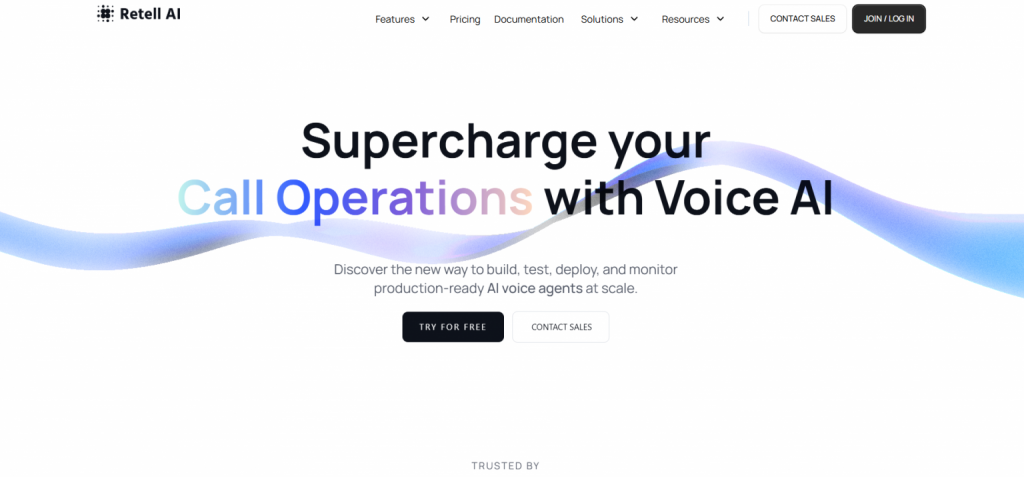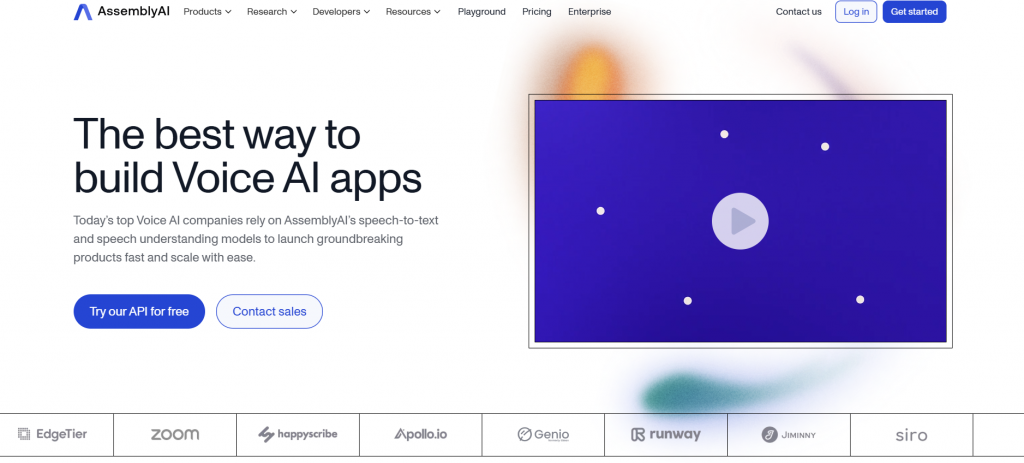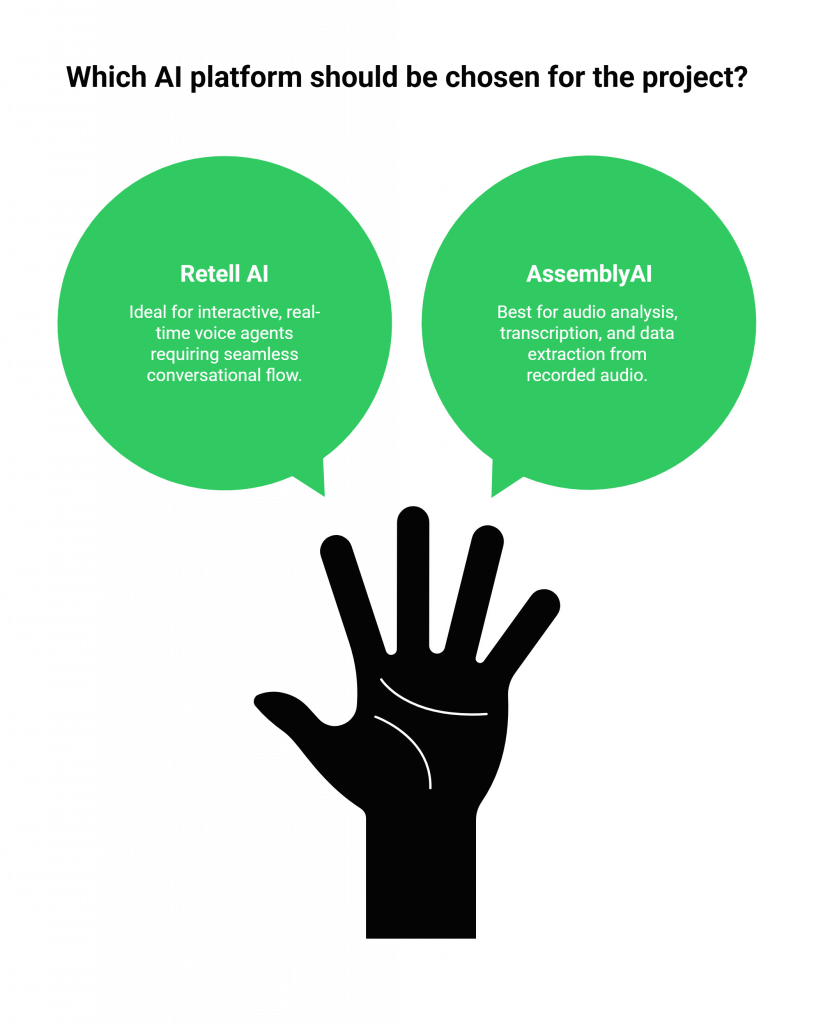For developers building with voice AI, the journey is filled with critical choices. Do you need a platform that can manage a real-time, fluid conversation with near-human speed? Or do you need a powerful API that can listen to audio and extract deep, meaningful insights from it?
This is not just a minor technical decision; it’s a fundamental architectural choice that will define your application’s capabilities. This brings developers to a crucial comparison: Retell AI vs Assembly AI.
One platform delivers a complete engine built for conversational speed, while the other offers a suite of world-class AI models for understanding audio data. Choosing between them is like deciding if you need a high-performance race car or the state-of-the-art engine that powers it.
This guide will break down the key differences, features, and use cases in the Retell AI vs Assembly AI debate, helping you select the perfect tool for your development goals.
Table of contents
Understanding the Retell AI & Assembly AI
The most important thing to understand is that Retell AI and AssemblyAI are not direct competitors. They are fundamentally different types of tools designed to solve different problems in the voice AI stack. In fact, you could even use them together.
What is Retell AI?
Retell AI is a developer-first platform designed to help you build voice agents that have incredibly fast and natural conversations. Its entire existence is centered on solving the biggest killer of user experience: latency. Retell provides a managed service, complete with an API and SDKs, that handles the entire real-time conversational pipeline for you.

Key Features for Developers
- Ultra-Low Latency: Retell is engineer for sub-second response times, allowing for natural turn-taking and user interruptions.
- Managed Conversational Pipeline: It bundles and orchestrates the Speech-to-Text (STT), Large Language Model (LLM) calls, and Text-to-Speech (TTS) into a seamless, high-speed flow.
- Developer-Friendly Abstraction: With their simple API and SDKs (TypeScript, Python), you can launch a production-grade voice agent without managing complex infrastructure.
Think of Retell AI as a complete, pre-built engine for conversational flow. You provide the “brain” (your LLM), and Retell ensures it can talk and listen at human speed.
What is AssemblyAI?
AssemblyAI is a leading API platform that provides developers with a powerful suite of AI models for transcribing and understanding audio data. Its core strength and market reputation are built on its best-in-class Speech-to-Text accuracy. It is not a conversational engine; it is a foundational component that other applications can build upon.

Key Features for Developers
- World-Class Transcription: AssemblyAI’s highly accurate STT models perform reliably in noisy environments and with diverse speakers.
- Rich Audio Intelligence: It goes far beyond simple transcription, offering features like speaker diarization (who spoke when), summarization, sentiment analysis, topic detection, and content moderation.
- Simple, Powerful API: As an API-first company, its service is incredibly easy to integrate into any application. You make an API call with your audio, and you get structured data back.
Think of AssemblyAI as a suite of powerful, specialized tools for listening and understanding. It is the perfect “ear” for any application that needs to process audio.
Also Read: Programmable Voice APIs Vs Cloud Telephony Compared
Retell AI vs Assembly AI: A Head-to-Head Feature Breakdown
To clarify the Retell AI vs Assembly AI comparison, let’s place their offerings side-by-side. This table highlights their different roles in the voice AI ecosystem.
| Feature | Retell AI | AssemblyAI |
| Primary Offering | A managed, low-latency conversational engine | An API for Speech-to-Text and audio intelligence |
| Core Function | Orchestrates real-time, two-way conversations | Transcribes and analyzes one-way audio streams or files |
| Main Use Case | Building interactive voice agents (e.g., sales, support) | Powering features that require audio data (e.g., transcription, analytics) |
| Key Differentiator | Speed of conversation and interruption handling | Accuracy of transcription and depth of audio analysis features |
| Delivery Model | Bundled, managed service (API & SDKs) | Foundational component (API-first) |
Use Case Analysis: When to Choose Which Platform

The best way to resolve the Retell AI vs Assembly AI choice is to look at what you are trying to build.
Choose Retell AI for Interactive, Real-Time Agents
You should choose Retell AI when your primary goal is to create a voice agent that has a fluid, back-and-forth conversation with a user.
- Example Project: An AI-powered sales agent that calls leads to qualify them.
- Why Retell Fits: This task requires instant responses, the ability for the lead to interrupt the agent, and seamless conversational flow. A delay of even one second would make the agent feel unnatural and ineffective. Retell’s managed conversational engine is built for this exact purpose.
Also Read: How To Lower Latency In Voice AI Conversations?
Choose AssemblyAI for Audio Analysis
You should choose AssemblyAI when your primary goal is to process audio content to extract data, insights, or a highly accurate transcript.
- Example Project: A meeting analytics platform that records sales calls, transcribes them, and analyzes them for sentiment and key topics.
- Why AssemblyAI Fits: This task is not about a live, two-way conversation. It is about the deep analysis of recorded audio. With industry-leading transcription accuracy, speaker diarization, and summarization, AssemblyAI is perfectly suited to power this application.
Conclusion: The Right Tool for the Right Task
In the final analysis, there is no winner in the Retell AI vs Assembly AI comparison because they are not in the same race. They are both developer-friendly, best-in-class tools that serve different, vital functions in the voice AI world.
Choose Retell AI when you need to quickly build and deploy a complete conversational agent where the speed and flow of the dialogue are the most important factors.
Choose AssemblyAI when you need a foundational component to provide highly accurate transcription or deep audio intelligence for your application.
By clearly identifying whether your project requires a complete conversational engine or a powerful audio analysis API, you can confidently select the right platform and set your project up for success.
Also Read: SIP Trunking Providers vs Traditional Carriers: Which Is Better?
Frequently Asked Questions (FAQs)
No, Retell AI is a conversational engine that integrates with various third-party STT and TTS services. It bundles these into a single, managed pipeline for you.
No. AssemblyAI provides the critical STT component (the “ears”), including a real-time API. However, you would still need to integrate it with an LLM, a TTS service, and a voice infrastructure platform to create a complete, interactive agent.
For building a complete voice agent, Retell AI is easier for a beginner because it is a managed, all-in-one solution that abstracts away much of the complexity. For adding transcription to an existing app, AssemblyAI is incredibly easy due to its simple and well-documented API.
Latency is the conversational delay. Retell AI’s entire platform is architected and optimized to minimize latency, making it the superior choice for building fluid, real-time conversational agents.
